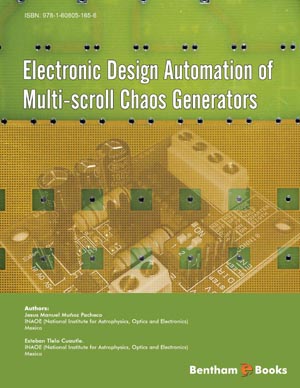Abstract
The behavioural modelling strategy based on state variables and PWL approximations allows us to represent several chaotic systems at the electronic system level (ESL) of abstraction. The design space exploration derived from numerical simulation approaches in the time domain can be adopted to estimate the performance values of the chaotic systems. That is only one part of a design strategy. Indeed, a question remains: which architecture and parameters values must be selected during the refinement operation of the behavioural models? Therefore, the synthesis methodology presented in this chapter completes the opamps based-synthesis of saturated functions introduced in Chap. 4. First, the steps of a new synthesis methodology proposed in this book for the design of chaotic systems based on behavioural modelling are summarized. The new methodology of circuit synthesis is performed by three hierarchical levels. Finally, numerical results are confirmed by H-SPICE simulations to show the usefulness of the proposed synthesis approach.
Keywords: Chaos, electronic design automation, dynamical systems, chaos generators, modelling and simulation.


















